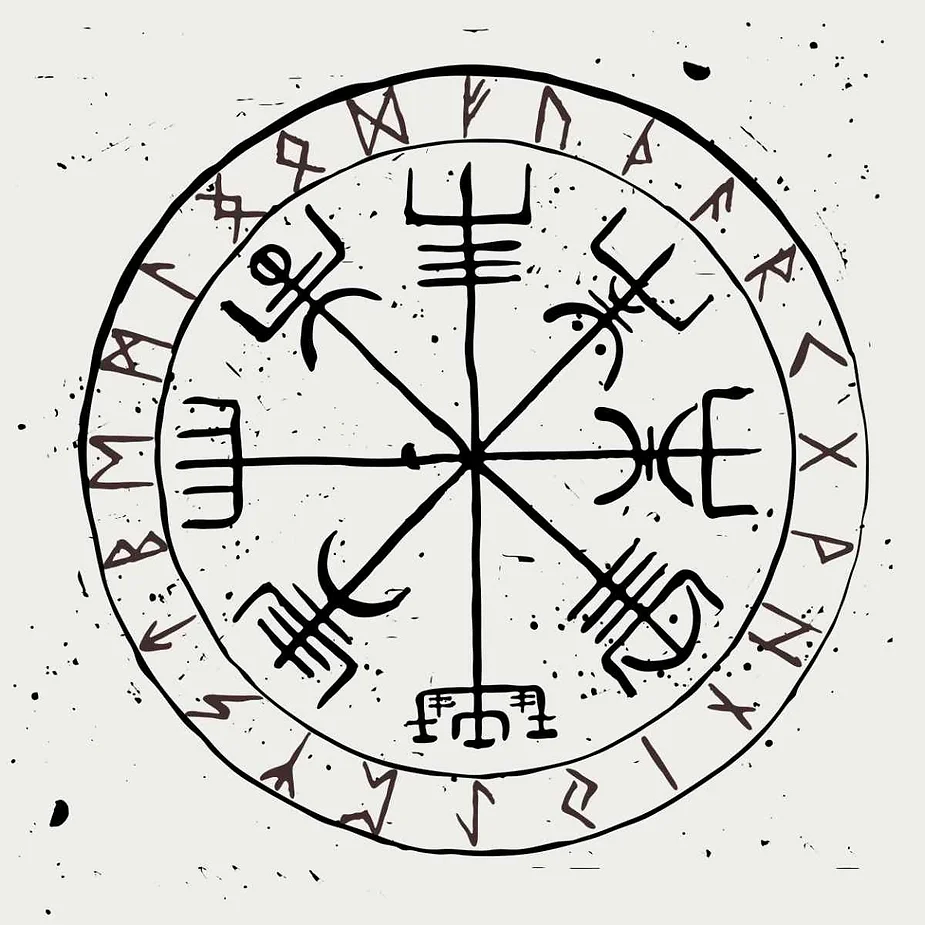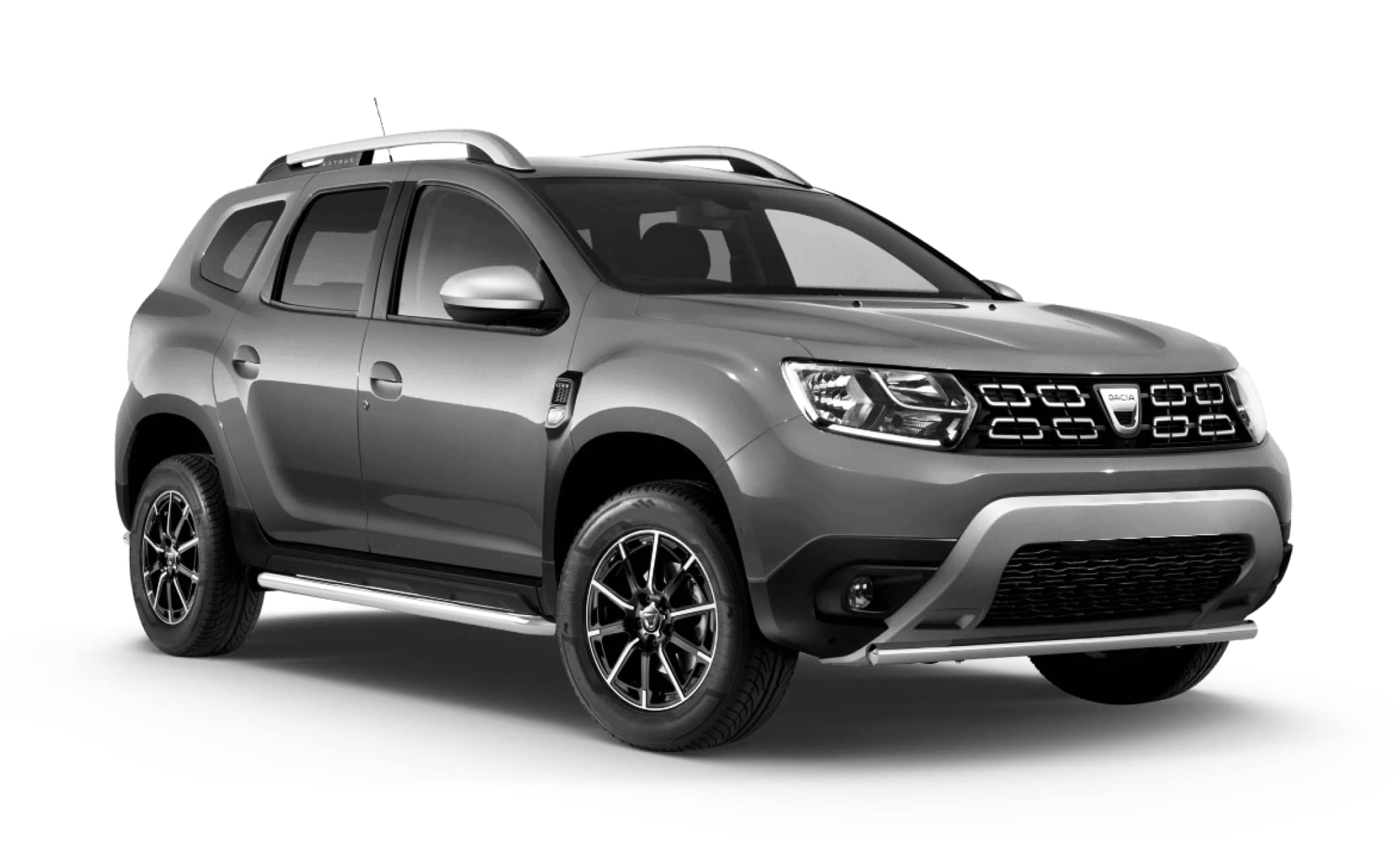Many people have fallen in love with Vikings and the lore surrounding them. One symbol that stands out is the Vegvisir, which is sometimes also referred to as a Viking or Norse compass. It serves as a guiding light that is rumored to have led the Norse sailors through storms and other harsh conditions along their way.
Contrary to what most people think, this emblem doesn’t have a historical connection. In fact, it’s been fairly recently that the Vegvisir has gained popularity. One of the things that brings visitors to Iceland and sparks interest in this Viking compass is the growing interest in Norse mythology and the history of the Vikings.
Read on to learn more about what the Vegvisir really means and where it came from to understand why it continues to capture attention. Here’s everything you need to know about this Viking emblem.
Did Vikings Really Use the Vegvisir for Navigation?
While the Vegvisir isn’t brand new, it also doesn’t have a historical context that relates to the Viking Age between 800 and 1066. Instead, it first appears in the Huld Manuscript, which was written in the 19th century.
The Huld Manuscript writes of the Icelandic magical staves. One passage from the book was translated to instruct individuals to “carry this sign with you, and you won’t get lost in storms or bad weather, even in unfamiliar surroundings.” This was the original intent of creating this symbol of guidance and protection.
The misconception that the Vegvisir dates back to the Vikings began because of its appearance, which resembles a runic compass. It appears to consist of Viking runes, but they don’t symbolize any specific letters or words.
So What Is the Vegvisir Viking Compass?
Although it doesn’t date back to the actual Viking era, it has taken root in Viking lore. Many call it the Viking compass and have immortalized it in tattoo form. However, it isn’t just a cool tattoo design; it has significance. The eight runes radiating from the central point, similar to a wheel and its spokes or the rays of a guiding star, have become a spiritual GPS, guiding and protecting the wearer (or the Vikings).
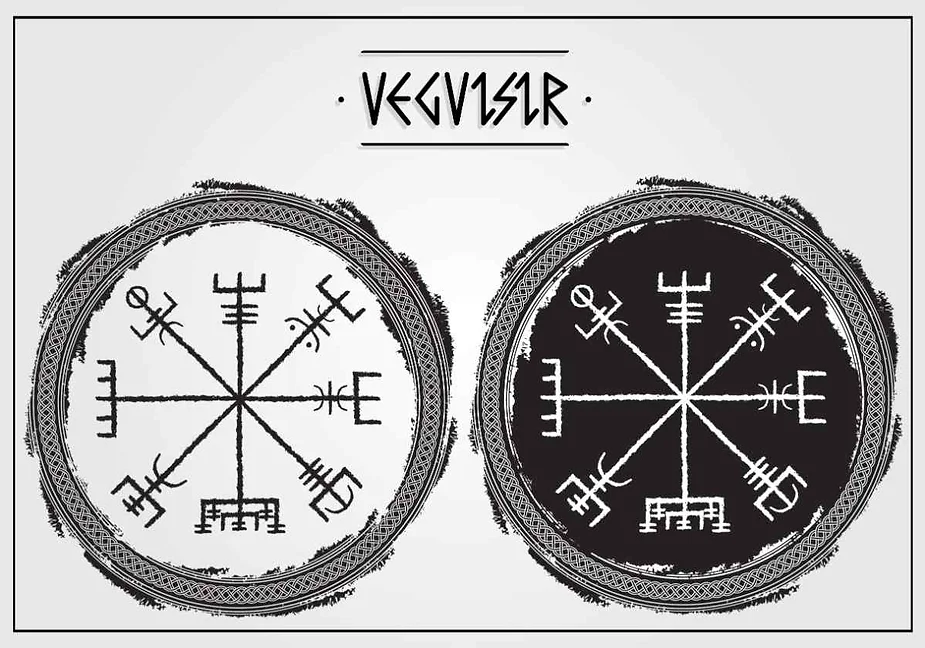
The Vegvisir seems to be rooted in the magic of old. It is sometimes surrounded by runes from the Norse alphabet, connecting the earthly Vikings with the divine powers they believed in. This representation gives the symbol spiritual and magical importance that has embedded itself in Norse culture. In addition to the Viking compass, it may also be known as a runic compass, Odin’s compass, or the Nordic compass.
Although it is often called a compass, the Vegvisir was never used to physically navigate the Nordic waters. It was meant to be symbolic only, ensuring that users of the symbol did not get lost, spiritually or physically. Today, we no longer use longships to navigate the ocean, but the Vegvisir is still seen as a protection rune that many people choose to immortalize on their bodies as a tattoo, wear as jewelry, or create video games around it, such as Valheim.
The eight points that make up the Vegvisir are similar to those found on timepieces and other historic navigational tools. Each point in the symbol contains a different design, each representing a unique Icelandic magic element or “galdrastafir.” However, this isn’t the type of magic that involves casting spells. Instead, it channels specific intentions that help guide the user.
What Does the Vegvisir Mean?
The Vegvisir isn’t just a random selection of Icelandic symbols. It was designed as part of the Icelandic magic culture to serve as a beacon of guidance that doesn't date back to the Vikings but does have some historical context. In Icelandic, the term “Vegvisir” means “signpost” or “wayfinder.” It is pronounced as “VEGG-vee-seer,” and is derived from “vegr” (way) and “visir” (shower). This word construction highlights that this symbol was created to point people in the right direction.
However, that doesn’t mean the Vegvisir is a traditional compass. It has eight points that have unique representations, each containing one element of navigation and guidance. The design has captured the hearts of many, symbolizing guidance through physical landscapes, as well as helping to get through spiritual and emotional issues we all face in our lives.
Today, you can find forms of the Vegvisir in many areas of life. Many people get it as a tattoo or buy jewelry bearing the symbol. You can even find it in video games like Valheim. It is seen as a protection rune to help the wearer navigate life and find their way.
The runes that are found around the Vegvisir add to the mystery of the symbol. These runes aren’t fixed and can be anything from runic letters to specific phrases, such as “not all who wander are lost.” This variability gives some customization and personal interpretation to the Viking compass. There is no single correct Vegvisir that was ever defined, and no specific text is required to make it an official symbol.
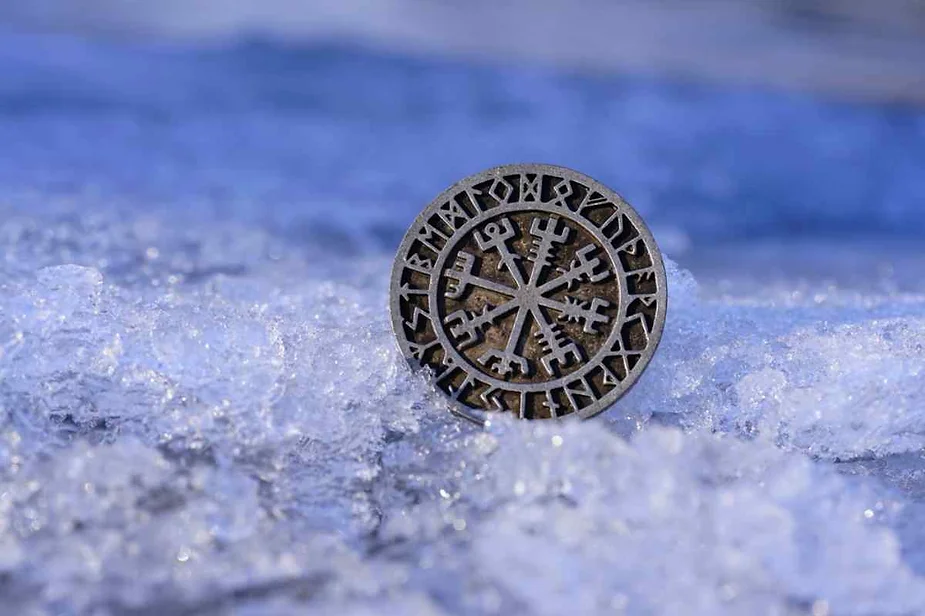
Which Runes Can Be Found Around the Vegvisir?
Many are curious which runes are typically found around the Vegvisir. Each one is more than just a symbol of something; they are meant to channel ancient wisdom and complete a spiritual connection. The Vikings were spiritual people who believed in the guidance of their ancestors. Here are a few of the runes you can expect to see:
- ᚦ (Thurisaz): Thurisaz is a symbol of protection and defense. It embodies the sheer strength of Thor’s hammer.
- ᚠ (Fehu): Fehu is a symbol of wealth and prosperity, reminding individuals of the rewards at the end of every journey.
- ᚨ (Ansuz): Ansuz represents wisdom and communication, channeling Odin’s voice through the wind to guide users.
- ᚱ (Raidho): Raidho symbolizes movement and travel, helping the Vegvisir guide individuals through unknown areas.
There are no specific rules that dictate what to include with the Vegvisir. It all depends on the creator’s intent or what the wearer wants to achieve. However, the overall purpose is clear: to guide, protect, and connect to the divine.
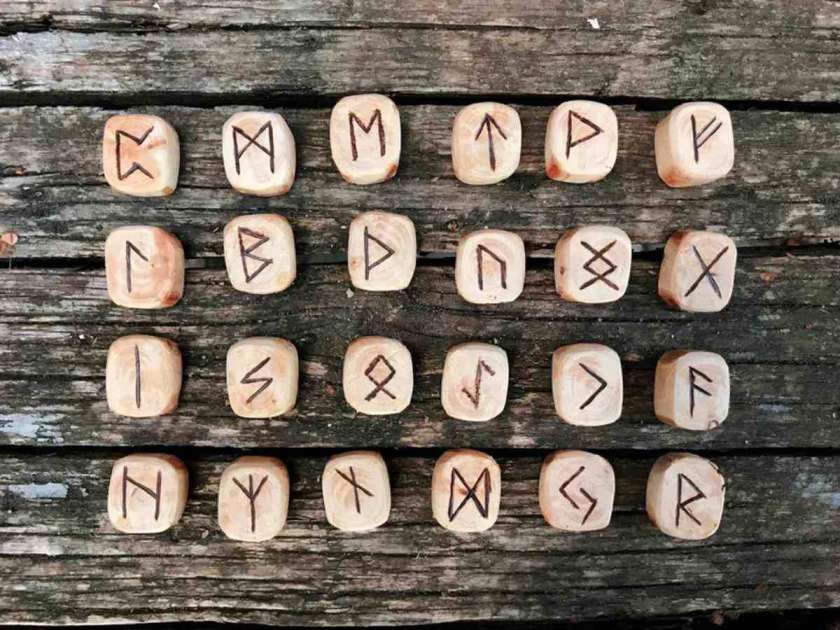
What Are the Benefits of the Vegvisir?
The Vegvisir’s wheel symbol has much historical and cultural significance, even if it doesn’t go all the way back to the Vikings. It offers numerous benefits to those who choose to wear it. Here’s what you should know about how this ancient symbol continues to be used today:
- Guidance: The Vegvisir is designed to guide and direct, but it isn’t just about navigating the physical world. It is also meant to guide through spiritual and emotional journeys. It symbolizes finding your true path in life and overcoming the many obstacles you may encounter along the way. The symbol is meant to be your guidepost when you aren’t sure where to go.
- Protection: The Vegvisir has become a well-loved protection talisman. The circular design creates a protective barrier around the person wearing it, helping to ward off any negativity, including sickness and other types of harm. In addition to physical protection, it is thought to protect against mental and emotional harm.
- Spiritual Connection: Using the Vegvisir connects you to the core of Norse mythology and the spiritual realm of the Vikings. It is designed to link you to the wisdom of those who have gone before us, who lived in a time when the natural and spiritual world were more closely connected and knowledge was openly shared between them.
- Symbolic Representation: The Vegvisir often serves as a personal reminder of your inner strength and resilience. Humans are capable of facing and overcoming so many challenges in life. This runic compass can remind you daily that you are stronger than you think and can adapt to anything life throws your way.
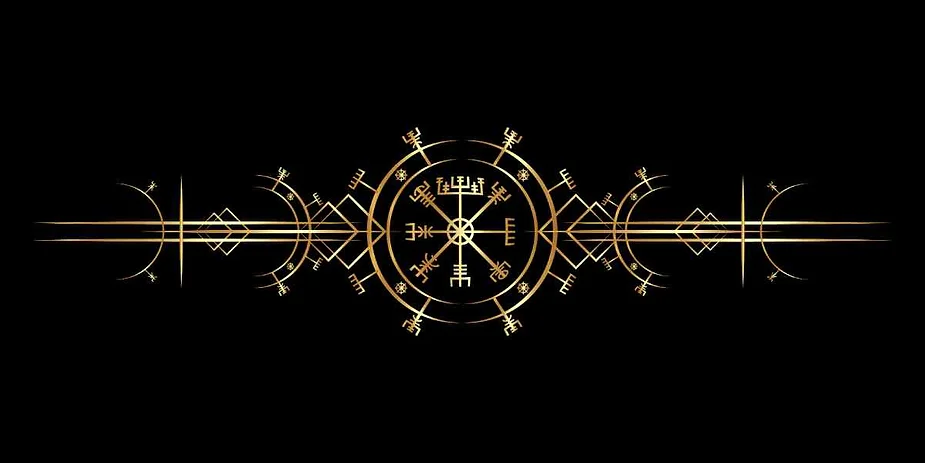
Is the Vegvisir Connected to a Specific Religion?
The Viking compass has sparked many debates over what religion it may be part of. In fact, a symbol similar to the Vegvisir was found in a 15th-century English document called “Solomon’s Testament,” which was part of the Harley Manuscript found in a British museum collection. This document contains many magical traditions and has symbols that are eerily close to the Vegvisir we all know.
The Christian Significance
Because of the similar symbol found in the Harley Manuscript, some have questioned the connection to Christianity. The similarity of symbols found in “Solomon’s Testament” and those present in Norse magic is an interesting discussion, but the one that relates to Christianity is more closely related to the Helm of Awe, a different Norse symbol, than the Vegvisir.
A Lack of Christian Documentation
Over the years, many researchers have searched through Christian church records and religious texts in search of evidence of symbols similar to the Vegvisir. However, none have been found, throwing doubt on the Christian origins of the symbol. This likely means that the Vegvisir was created outside the scope of Christianity, despite its spiritual meaning.
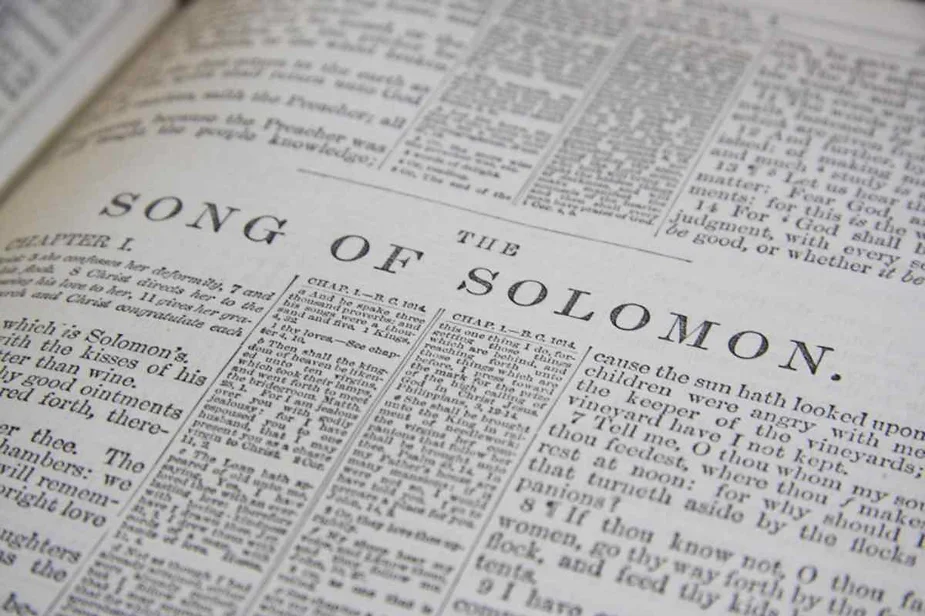
Non-Pagan and Magical Mysticism
Neo-pagan groups, especially those related to Norse mythology, have welcomed the Vegvisir into their traditions. They celebrate the symbol as a cultural artifact, along with a guidance and protection beacon. This recognition goes far beyond the historical roots and places the Viking compass as a part of mysticism and spiritual connections. It has drawn attention from those who are interested in Norse mythology, along with individuals who practice magic, giving it a unique position as a symbol that brings together ancient wisdom with modern spiritual beliefs.
The Influence of the Vegvisir on Modern Culture
The most common way people today are using the Vegvisir is as tattoos, which have grown in popularity as the obsession with all things Norse has increased. With Marvel films over the years and the Viking TV series, Norse culture has been thrust into the spotlight, taking the Vegvisir with it.
- Popularity: Vegvisir tattoos are becoming a prominent option on the scene. The attraction of Norse mythology and its depiction in recent media has drawn more people to choose this symbol for their next tattoo, especially when visiting a place like Iceland.
- Aesthetic Appeal: The Vegvisir offers a sleek, yet intricate design that looks great in the tattoo format. Individuals who want a meaningful tattoo that catches attention and is visually appealing are attracted to the symmetrical layout, creating the appeal of balance and beauty.
- Significance: Because people believe the Vegvisir has the power to guide and protect, getting a tattoo of the Viking compass serves as a protection talisman, guiding the individual. In addition to physical guidance, humans desire security and direction in the spiritual and emotional sense as well, all provided by this single symbol.
- Celebrity Influence: Icelandic celebrities have gotten Vegvisir tattoos in the past. For instance, Björk got one as more than just a fashion statement, but a declaration of her identity and sense of belonging. Her tattoo states, “No matter where I go, I will find my way back to my roots.” With her global status, she no doubt contributed to the increased interest in these tattoos.
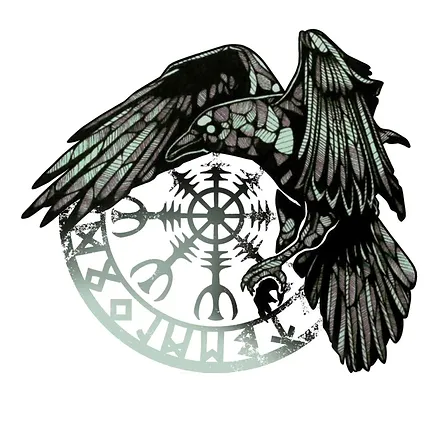
Drawing the Vegvisir
The ability to draw a Vegvisir, or Viking compass, takes creativity and allows the artist to connect to the past through drawing a symbol rich in history and mysticism. If you’re interested in drawing your own, here’s a guide to get you started:
- Start with a Circle: Draw a large circle, giving you a visual boundary as you draw the Vegvisir. The circle itself symbolizes the universe and the protective barrier it creates.
- Sketch in the Eight Spokes: Draw eight lines radiating from the center of the circle. Keep these spokes evenly spaced, representing the four cardinal and four intercardinal directions. The Vegvisir mimics a traditional compass to navigate the physical and spiritual realms.
- Add the Details to the Spokes: Each spoke of the Viking compass has a unique design, which may incorporate curves, dots, or smaller lines. The intricate details aren’t just meant to be decorative; they represent the various types of guidance and protection the Vegvisir provides. Take your time drawing the details and follow your heart.
- Implement the Runes: The original Vegvisir doesn’t require using specific runes around the symbol, allowing you to personally choose the ones that fit you best. Consider the ones that best fit your intentions, such as protection (ᚦ Thurisaz), prosperity (ᚠ Fehu), or wisdom (ᚨ Ansuz).
- Finalize Your Design: As you finish your drawing, consider the purpose of the Vegvisir: guidance, protection, and connection to the Viking heritage. Each personal talisman carries the spirit of this ancient navigational tool, so you can get guidance and protection on your life’s journey.
What Other Forms Can the Vegvisir Take?
While tattoos are a popular option for using the Vegvisir, it can be found in other areas as well. Every instance of the Viking compass has a unique interpretation and significance to share:
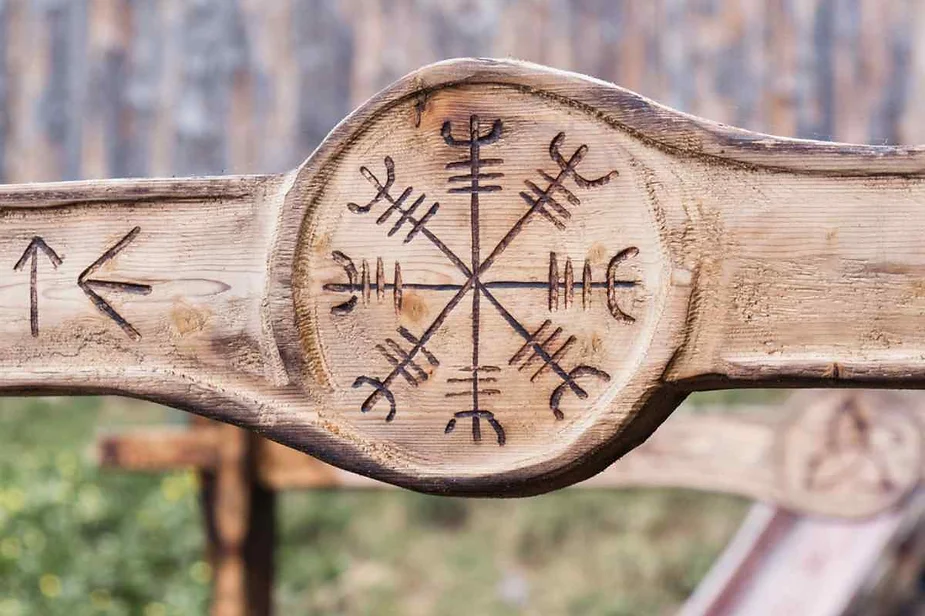
- Home Decor: You may find the Vegvisir pictured on home decor items like wall art, throw pillows, or blankets. Using them around the home provides a decorative reminder that your home is protected and your family will be guided through this journey called life.
- Jewelry: The Norse compass is used by jewelry artisans to design intricate pendants and other pieces of jewelry that have taken the fashion world by storm. Individuals choose to wear these pieces as personal protection amulets, channeling the protective energies of the Vegvisir.
- Tattoos: Tattoos are one of the most popular options for individuals who want to incorporate the Vegvisir into their bodies in various sizes and forms. Some people prefer to keep the traditional circular design, while others create abstract interpretations of their own for an eye-catching design.
- Digital Art: Many artists now produce digital art, bringing the Vegvisir into the digital space. You will find this symbol present in logos, art pieces, and company branding, especially in situations relating to Nordic culture or nations.
What Is the Difference Between the Vegvisir and the Helm of Awe?
As you begin exploring Norse mythology and the symbols associated with it, you will likely notice two different designs that are similar, yet different. The Ægishjálmur, or better known as the Helm of Awe, and the Vegvisir. These two symbols share many similarities and can be confused at first glance, but if you look closely, you will find distinct variations, including design elements, cultural significance, and their meanings.
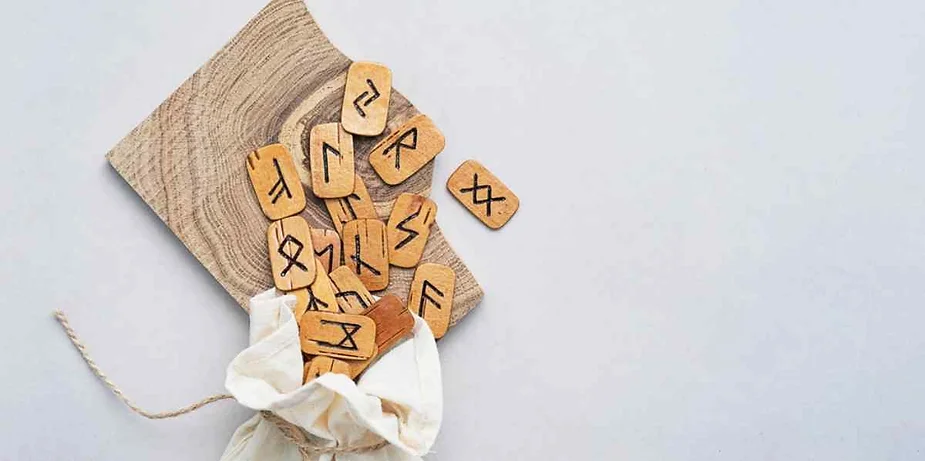
Design Differences
To start, both the Ægishjálmur and Vegvisir are circular symbols with intricate lines and designs. However, the eight points of the Ægishjálmur are identical and symbolize protection and might, rather than guidance. It’s a straightforward design that is just as effective as the Vegvisir.
On the other hand, the Vegvisir is a more complicated navigational tool. The eight points each have a unique appearance and are designed to reach both the physical and spiritual realms. It’s an intricate design that offers guidance and protection so individuals don’t lose their way.
Symbolic Meaning
The symbolic meaning of both emblems is deeply rooted in the Norse culture. The Helm of Awe, or Ægishjálmur, was thought to make warriors invincible in battle and would instill fear in the hearts of those who saw the symbol. It was seen as a powerful talisman that granted protection and strength.
The Vegvisir, however, was a more spiritual symbol that provides guidance and protection as you navigate life’s many challenges, helping individuals find the right path through life.
Cultural Significance
The historical context of these two symbols plays a role in their cultural significance as well. For instance, the Ægishjálmur was preferred by warriors and was rumored to be worn by Fafnir, a powerful, fearsome dragon. It symbolized power and protection. The Vegvisir originated with the Huld Manuscript and was linked to magic and guidance to help individuals navigate their physical and spiritual lives.
Historical Context
The Ægishjálmur has historically symbolized supremacy and invulnerability. It was often painted on warriors’ foreheads as a badge of honor before heading into battle. This talisman wasn’t meant to simply provide protection; it also proclaimed bravery and strength to intimidate the opponent. The Vegvisir may not be as old, but it is also a protective symbol, more designed to guide through the physical and spiritual journey of life.
Although the Vegvisir and Ægishjálmur are often seen as interchangeable, there are two distinct meanings based on Norse mythology. Each one has a unique purpose, story, and legacy.
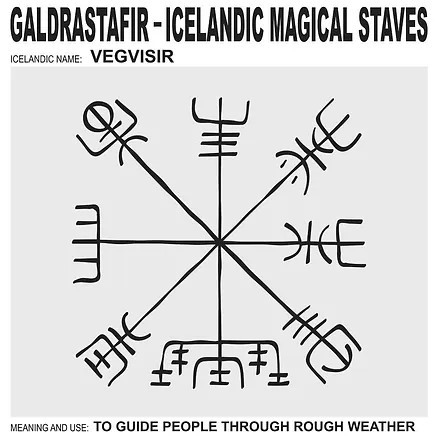
What Can We Learn from the Vegvisir about Other Icelandic Staves?
As we look at the Vegvisir along with other Icelandic staves like the Ægishjálmur, you will find a fascinating world where these interesting symbols serve a unique purpose in the lives of those who use them. Let’s take a closer look!
- Vegvisir vs. Ægishjálmur: The Vegvisir was designed to guide individuals through life’s storms, a sharp contrast from the Ægishjálmur’s purpose of might and invincibility. In essence, the Vegvisir is a compass for the soul, while the Ægishjálmur is a shield that protects from fear and danger.
- Variety and Purposes: Icelandic magical staves often serve numerous purposes. For instance, the Gjallarhorn attracts wealth, Sigurd's Glyph ensures victory, and Lukkustafir fosters good fortune. Each symbol represents an area of life, serving a specific purpose that can be customized based on each person’s challenges and aspirations.
- Symbolic Significance: The Vegvisir places major emphasis on the importance of having direction and protection throughout your daily life. Even though you may have strength and victory against life’s challenges, it will show you where life is leading you and ensure you feel safe along the way.
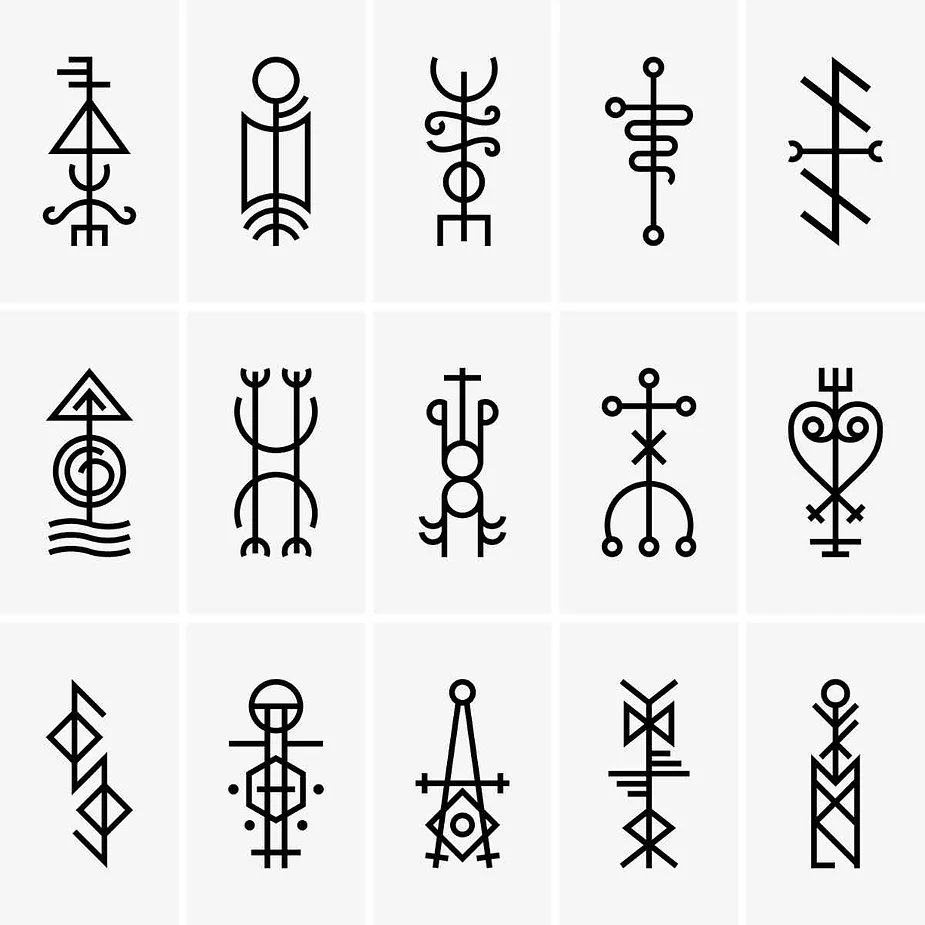
How Is the Norse Compass Still Relevant in Today’s World?
Today’s world is marked by uncertainty and constant changes, making the Vegvisir’s symbolism an important philosophy and practical lesson for individuals, even today. How amazing it is that an ancient navigational tool would still make such an impact on our lives in a modern society. So many people still seek to find their personal navigation through all the challenges they go through. Here’s how the Vegvisir can help people today:
- A Beacon Through the Storm: Even if the Vegvisir wasn’t created as an actual navigational tool to help Norsemen find their way through hazardous conditions, it still teaches the importance of unwavering principles and values to morally and spiritually guide us through life’s challenges. It helps us find an anchor in the things that really matter.
- Decision-Making Compass: Every day, there are overwhelming decisions to make. With the help of the Vegvisir and its guidance, you can make choices based on your intentions and aspirations. You will be reminded to choose the path that best matches your identity and purpose.
- Personal Growth and Exploration: The Vegvisir is a visual symbol of your life’s journey. Reaching your goals is important, but so is growing, learning, and exploring different paths along the way. You will learn to appreciate the twists and turns life may take, personally and professionally.
- Community and Support: A traditional compass shows direction. Likewise, the Vegvisir encourages you to seek out community and networks that can support your growth and well-being. You will recognize the importance of friendship and guidance in achieving all your goals.
Count on the Vegvisir for Guidance on Your Journey
Now that we’ve explored the background of Norse mythology and how it has left behind meaningful, timeless symbols like the Vegvisir and Ægishjálmur, it’s time to start thinking about your journey. These ancient icons are more than just historical items; they’re the source of valuable life lessons, guiding you through the challenges of life with your personal convictions.
The stories of these and other Icelandic staves encourage us all to learn more about Norse mythology and integrate what it teaches into our daily lives. If you want to truly immerse yourself, a trip to Iceland can be just the ticket. Rent a car in Iceland to start your personal quest to explore the mystical landscapes, just as the Vikings once did, inspiring them to create something as magical as the Vegvisir.




